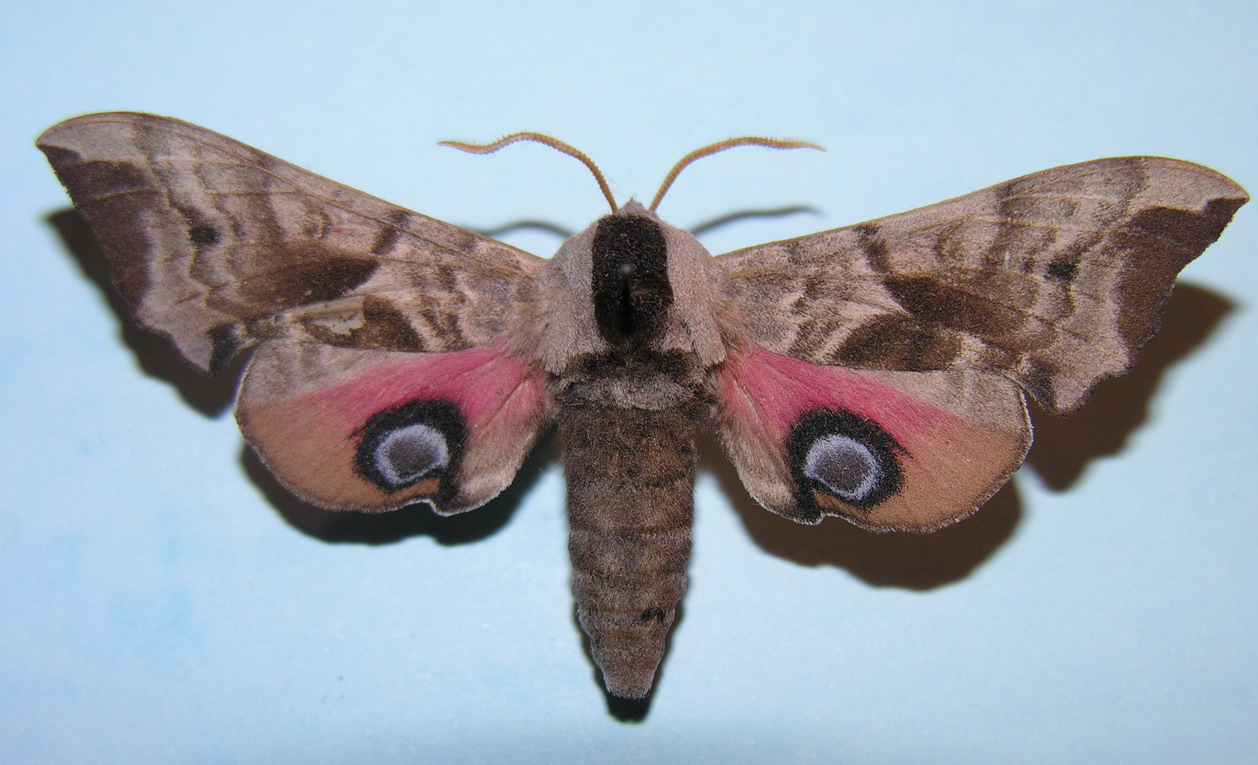- Smerinthus ocellata
Taxobox
name = Eyed Hawk-moth

image_width = 204px
regnum =Animal ia
phylum =Arthropod a
classis =Insect a
ordo =Lepidoptera
unranked_familia =Macrolepidoptera
superfamilia =Bombycoidea
familia =Sphingidae
subfamilia =Smerinthinae
genus = "Smerinthus "
species = "S. ocellata"
binomial = "Smerinthus ocellata"
binomial_authority =
synonyms ="Smerinthus ocellatus"The Eyed Hawk-Moth ("Smerinthus ocellata") is a European
moth of the familySphingidae ."The Eyed Hawk-Moth, so called from a large and beautiful spot in each of the hind wings that somewhat resembles an eye. The fore wings are brown, with a very beautiful reddish bloom over them, and clouded with olive-brown. The hind wings are of a delicate rosy red at the base, and a pale brown towards the margin; and each has a large and beautiful eye-like spot, grey in the centre, surrounded with blue, and the blue surrounded by a black ring.
The skin of the
caterpillar is rough, likeshagreen ; it is pale green, sprinkled with white, and has seven oblique white stripes on each side. The horn at the tail is blue. It is very common in the autumn, feeding onapple trees in gardens, and onwillow bushes in hedges.The chrysalis is red-brown, and glossy. The Moth is found about
Midsummer .":"This information was taken from the public-domain The Illustrated Natural History of British Moths (1869) by
Edward Newman ."The eyespots are not visible in resting position, where the forewings cover them. They are displayed when the moth feels threatened, and may startle a potential
predator , giving the moth a chance to escape.(Stevens 2005)References
* (2005): The role of eyespots as anti-predator mechanisms, principally demonstrated in the Lepidoptera. "Biol. Rev." 80(4): 573–588. doi|10.1017/S1464793105006810 (HTML abstract)
Wikimedia Foundation. 2010.
